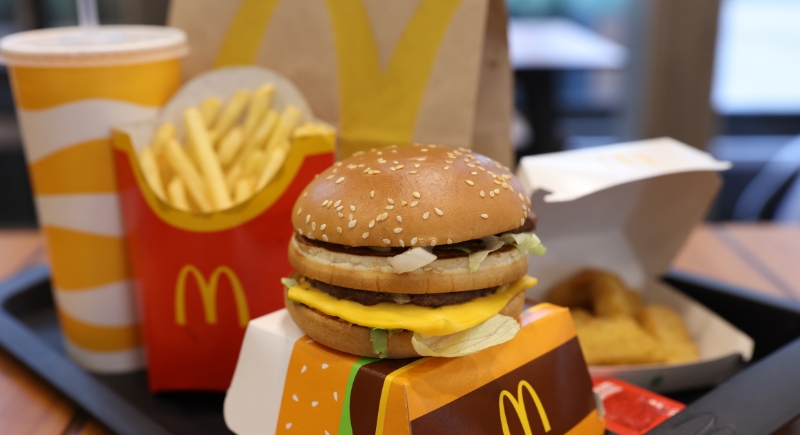Here’s the Real Reason McDonald’s Is Willing to Lose Money on Its $5 Meal
McDonald’s has been hearing it loud and clear. Customers are fed up with paying $18 for a Big Mac meal and calling it “McFlation.” Prices across fast food have jumped way past what people are used to, and even loyal McDonald’s fans have started staying home. To win them back, the company is taking a surprising step: it’s willing to lose money.
Discussing the Price Problem

Image via Getty Images/Tashi-Delek
Over the past few years, prices at McDonald’s have increased by about 100%, far outpacing the 31% inflation rate during the same period. Meals that once felt cheap and cheerful now sting the wallet. Social media is filled with complaints about $8 chicken sandwiches and $25 nugget bundles. The backlash hit hard enough that McDonald’s leadership had to act fast to rebuild its image as the go-to spot for an affordable meal.
CEO Chris Kempczinski admitted that the company’s core audience, people earning under $45,000 a year, had started skipping McDonald’s altogether. He told investors earlier this year that affordability would be the new “battleground.”
The $5 Deal Strategy
The answer came in the form of the new $5 meal deal. For a limited time, customers can grab a McChicken or McDouble, fries, and a drink for that flat price.
McDonald’s knows it won’t make much profit from this deal. In fact, it’s covering about half of the price cut itself, spending roughly $15 million in September and planning around $75 million more in the following quarter. Coca-Cola is even pitching in to help offset the hit to profitability.
This is no small gesture. McDonald’s and 98–99% of its U.S. franchisees have agreed to share the cost, essentially splitting the bill to give diners a break. The goal is to “bridge” the tough economic moment until consumer spending picks up again.
Franchise Tensions and the Value Comeback

Image via Canva/Africa Images
Not everyone’s thrilled about it. Some franchise owners pushed back, arguing that rising food and labor costs, especially in states like California with a $20 fast-food minimum wage, make deals like this nearly impossible to sustain. Others wanted to bring back simpler, cheaper menu items, such as the snack wrap. After weeks of back-and-forth, McDonald’s corporate team offered to help fund the losses, but only after accounting for the potential traffic boost the deal might bring.
Starting in September, the company will also roll out discounted combo meals, approximately 15% cheaper than buying items separately, and reintroduce its Extra Value Meals. That means $5 Sausage Egg McMuffin meals and $8 Big Mac combos are returning to menus nationwide.
Buying Time for Everyone
The move aims to keep customers loyal during a rough patch. Fast-casual rivals like Chipotle and Sweetgreen are losing traction as younger diners pull back on spending, and McDonald’s wants to scoop up that crowd. So far, the plan seems to be helping. U.S. comparable sales rose 2.4% last quarter, and the company’s stock ticked up 2.2% after announcing the deal.